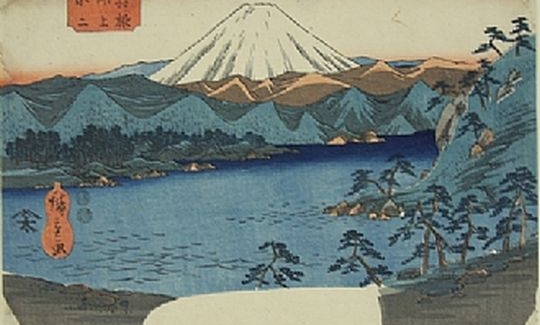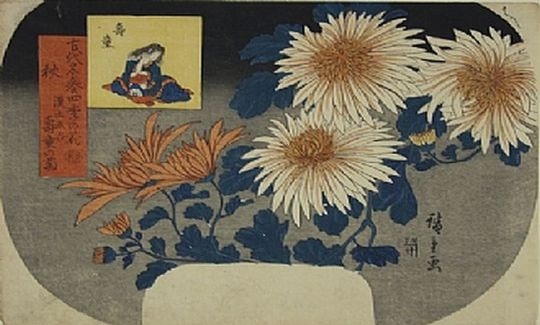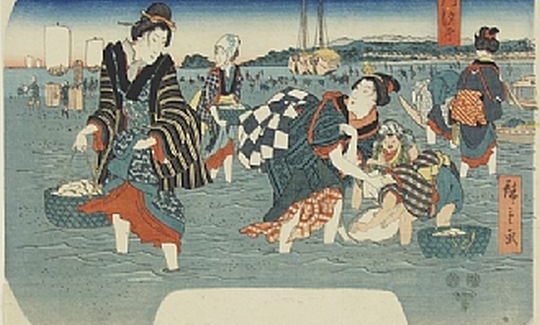There are two principle types of fan in Japan. Fans first reached Japan from China by way of Korea during the 6th century CE. These fans were flat, rigid ovals, known in Japanese as "uchiwa". The folding fan - the "ogi" or "sensu" - was created in Japan during the reign of the Emperor Tenji (661-672).
The fan usually has a bamboo frame, but more elegant versions also made use of ivory. The number of ribs varies from 3 to 80. The frame is covered with silk or paper decorated with a painting, a print, or calligraphy. Those embellished with works by renowned artists are very valuable.
Fans were in daily use, both by men and women, and were also used during various formal ceremonies - the tea ceremony, in dance and theatrical performances, etc. - or for decoration. A fan could indicate a person's rank, social standing, or occupation. Betrothed couples exchanged fans, and the Japanese still give them as presents. The samurai carried them, including battle-fans (tessen, gunsen) with iron ribs which could be used as weapons in the hour of need.
The tradition of designing fan-shaped prints arose during the second half of the 18th century. Prints for embellishing fans for daily use are usually of the uchiwa type. The wooden board on which the illustration was carved had the upper and lower edges rounded off, so that the print could be easily fitted to the bamboo ribs which are attached to the handle of the fan. During the 18th century, there were publishing houses such as Dansendo which specialized in producing fan prints. "Dansen" is pronounced in imitation of the Chinese rendering of the Kanji signs, which are also used to represent the word "uchiwa". Such fans were sold by peddlers in the streets, or could be purchased directly from the publishers.
Since the fans were in constant use, the prints were often damaged or completely ruined. Only a few fan prints have survived, which is why they are such rarities. Many of them are from the pattern-books of the fan vendors. For this reason their colours are still so vivid and, in some of them, the lower left corner is stained from constant handling and turning the pages.
Many artists, especially from the 19th century, including Ando Hiroshige (1797-1858) who designed some five hundred fan prints, were intrigued by this format. These artists used the special shape to create prints with unusual compositions which could not have been achieved on standard rectangular sheets of paper.




